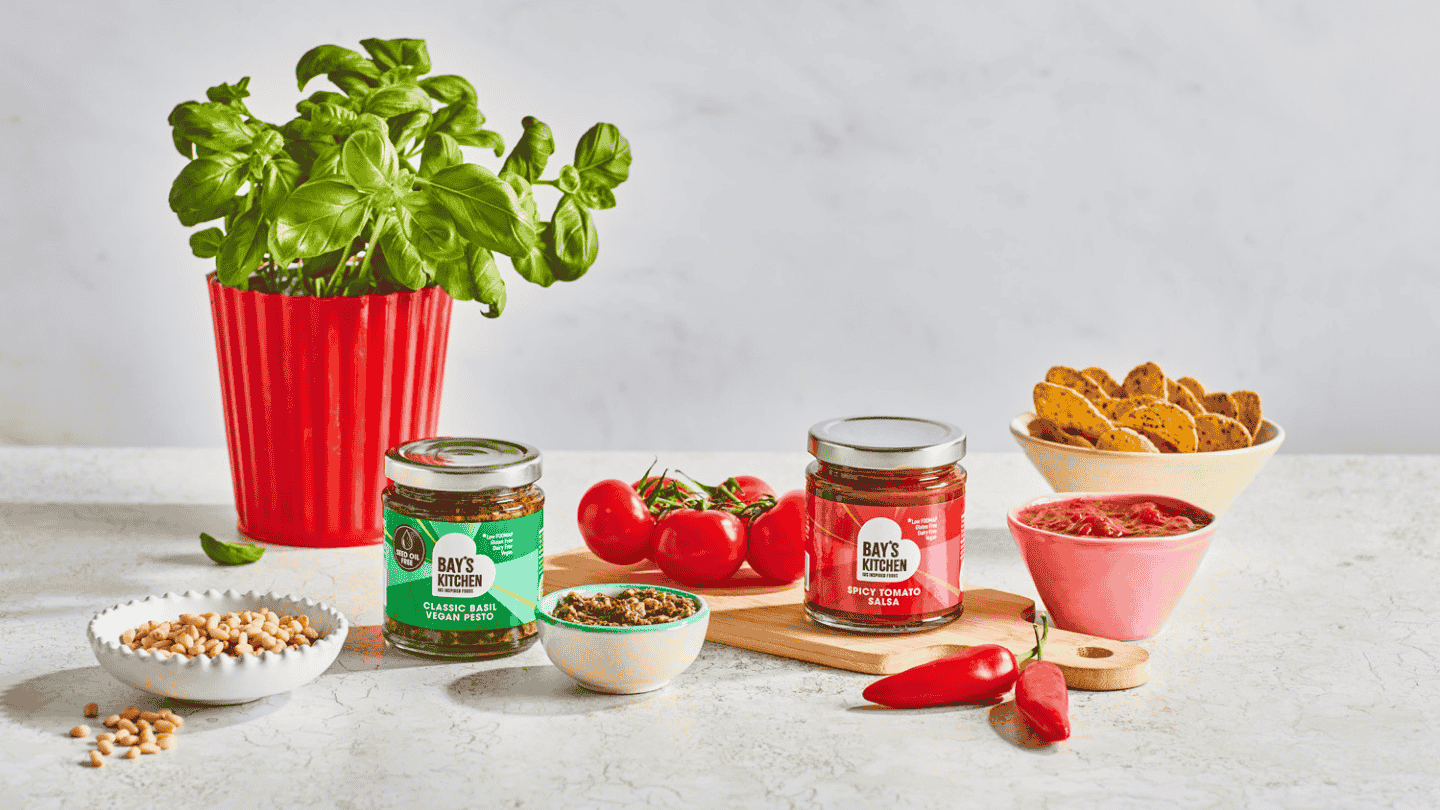When I was first diagnosed with IBS and advised to follow a low FODMAP diet, I went and did what we all probably did, I ‘Googled’ it! I was immediately panicked and disheartened to see so many of my favourite things on the high FODMAP list, which I needed to avoid.
However, rather than dwelling on what I couldn’t eat, I focussed on what I could and began making recipes which were just as flavoursome (if not more so!) than what I was used to cooking. I had to put a bit more thought into flavours, and so I actually ended up creating more tasty food!
Below is a list of items that are forever on my shopping list and are key to many delicious meals:
1. Garlic infused oil
This is a total life-saver! FODMAPs in garlic aren’t soluble in oil, so whilst garlic is a complete ‘no-no’ for us, garlic infused oil is low FODMAP! So you can keep that garlic flavour and aroma in your favourite dishes.
2. Chives
Chives are from the same family as onions, and so help to add that bit of flavour back in to your dishes – as well as adding some great colour! Chives work their best when added just before serving. To replace onions you can also use the green parts of spring onions and leeks!
3. Herbs & spices
Sticking with the ‘flavour’ theme, I wanted to tell you about my favourite herbs and spices to add to your shopping list. (Sorry been a bit sneaky and counting these as ‘one’ in my list of 10 ingredients!) Whilst garlic and onion are out, there are so many other amazingly flavoursome herbs and spices that come be used to make your meals absolutely delicious! Fresh herbs are better, but dried will work to. So, a few of my staple favourite herbs and spices are: Basil, Thyme, Rosemary, Sage, Cinnamon, Chilli, Paprika and Vanilla!
4. Tomatoes
Tomatoes are such a versatile ingredient and fantastic for making base sauces and soups. Whether you’re craving a pasta dish or a pizza, curry or a Mexican chicken dish (or a host of other favourites), tomatoes are key!
5. Quinoa
Quinoa is becoming ever more popular, and it’s no wonder when you consider that it’s a tasty and healthy alternative to wheat and gluten. Quinoa is full of protein, vitamins and minerals and dietary fibre – perfect as a staple ingredient in your low FODMAP diet.
6. Oats
Oats are a big part of my breakfast! They are perfect to make porridge, granola or to add to a fruit smoothie. Oats are also great to make low FODMAP cookies and snack bars. What’s more… they are full of fibre!
7. Cheese
I am a big cheese fan, so this was always going to be on the list! I was very excited to see most cheeses are low in FODMAPs (remember to check quantities), even my favourite halloumi cheese is low FODMAP in 50g servings or less! Camembert, cheddar, feta, mozzarella and more are all low FODMAP! So whether you’re making a homemade beef burger, nachos, pasta or pizza, you don’t have to miss out on adding cheese!
8. Almond milk
There are many different lactose free milks available, but Almond Milk is by far my favourite. It has great taste and a slightly sweetened flavour. Perfect to add to granola, porridge, smoothies and low FODMAP baking!
9. Raspberries
Raspberries are one of my favourite fruits (along with blueberries, strawberries, bananas and so on!) The great thing about raspberries are that they are full of flavour and full of fibre! Add them to cookies, smoothies, porridge or eat on their own as a snack.
10. Courgettes
Whilst these are my favourite ingredients, they may not alll be yours… that’s ok! Just make your own list, remember to check the quantities to be sure they are low FODMAP. It really helps to have a ‘go-to’ list of key ingredients, as it makes shopping and meal planning that bit easier. If you found this article helpful, then don't forget to check out these 4 delicious low FODMAP meals plus pantry essentials.
*Please note all items above are low FODMAP in particular serving sizes. Please always check serving sizes – the Monash University App is great for this. Whilst these are all great ingredients to keep in your cupboard, we still highly recommend you speak with your doctor and work with a trained dietitian before starting on the low FODMAP diet.







